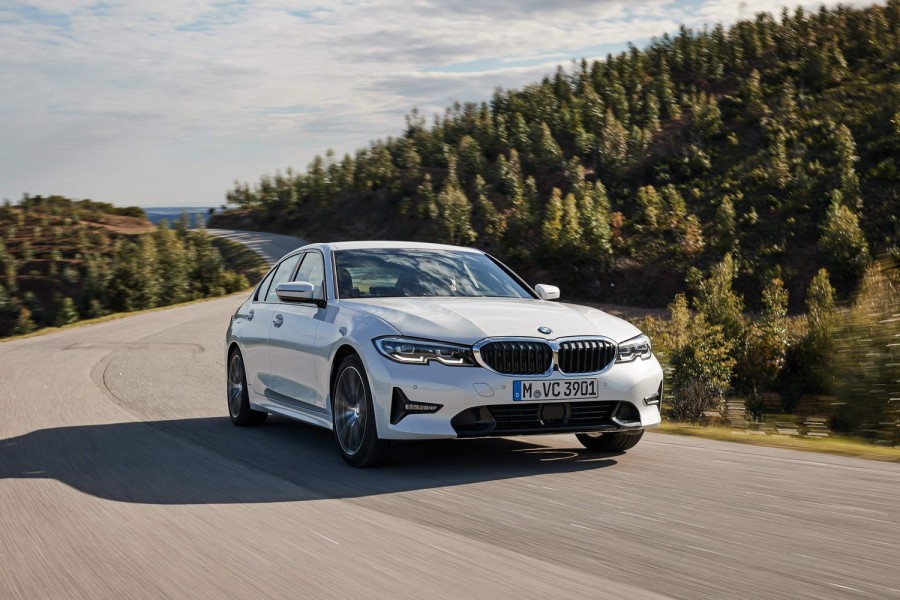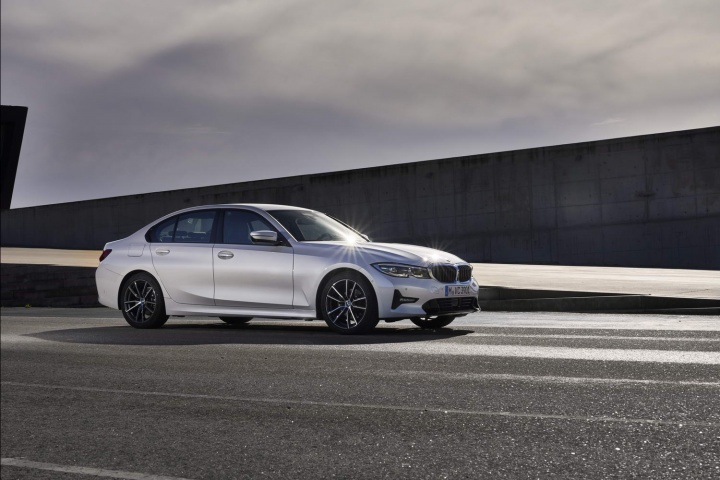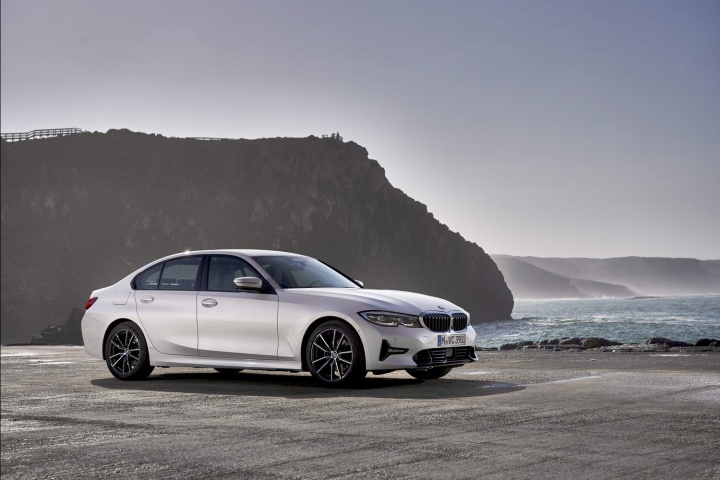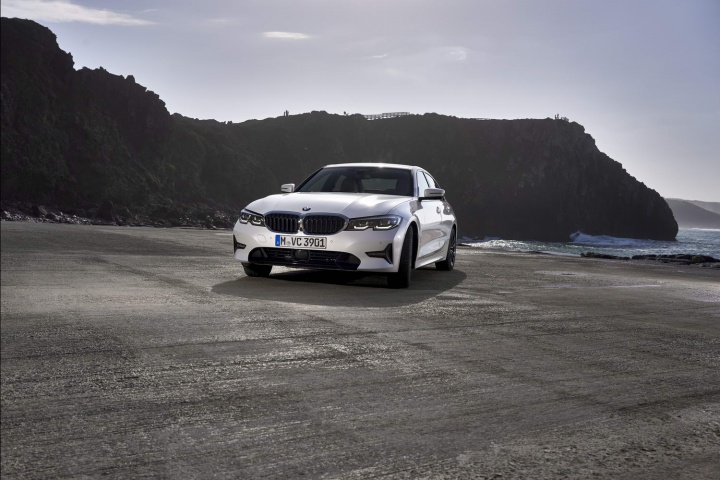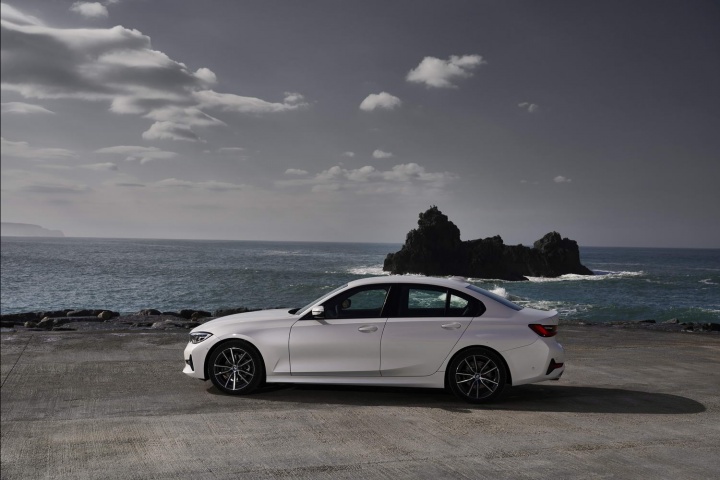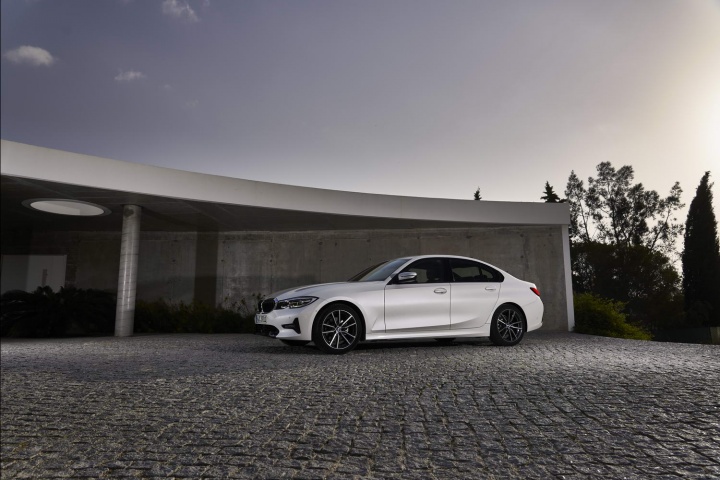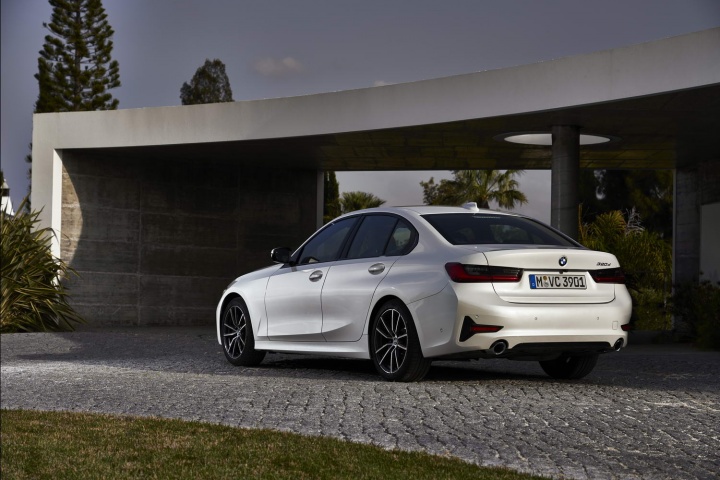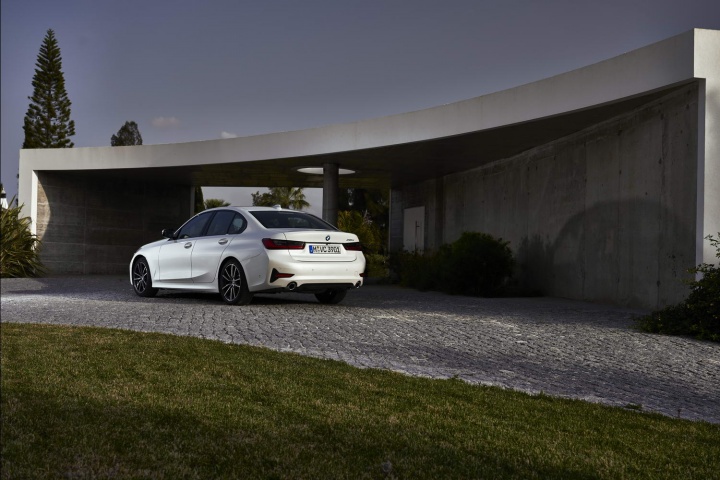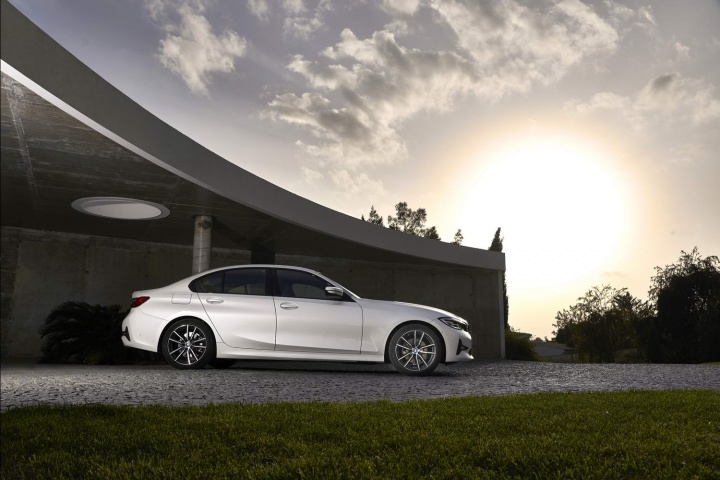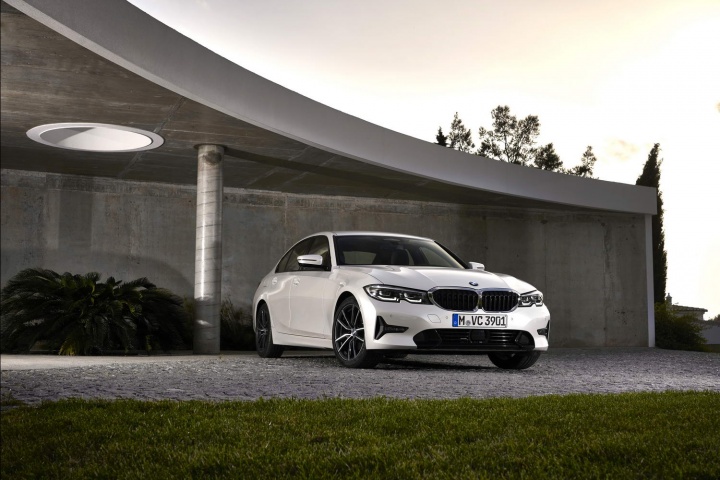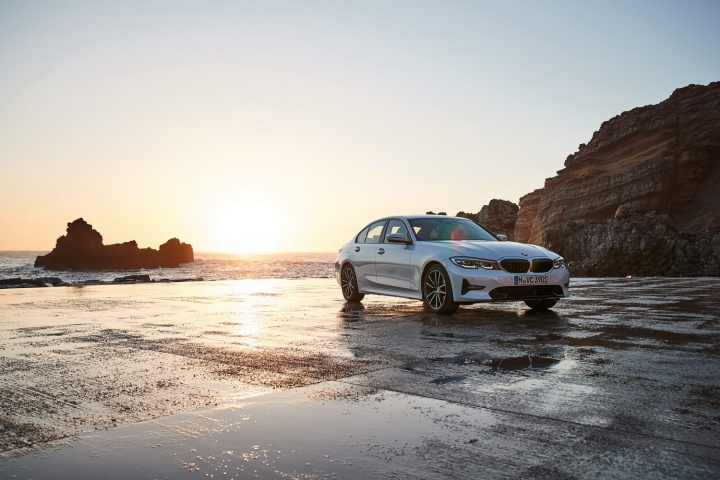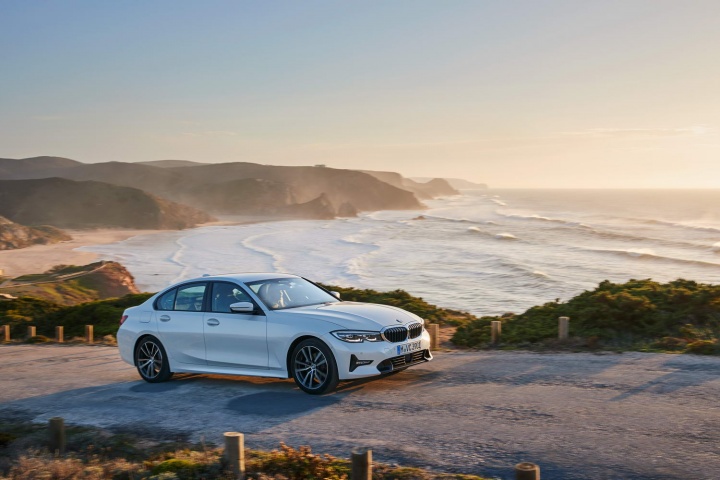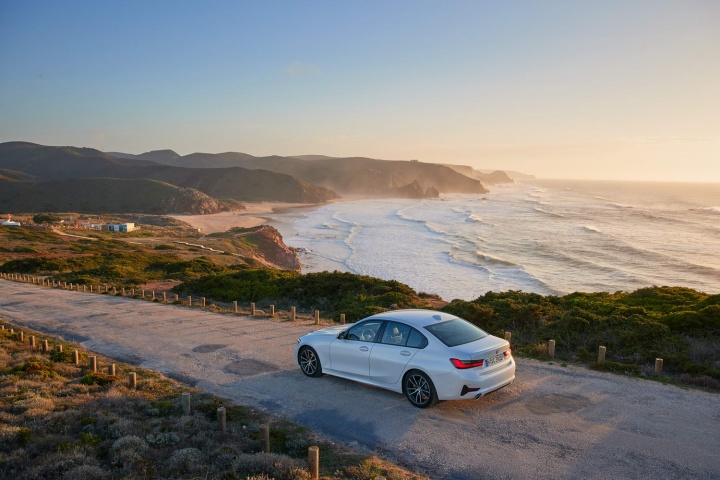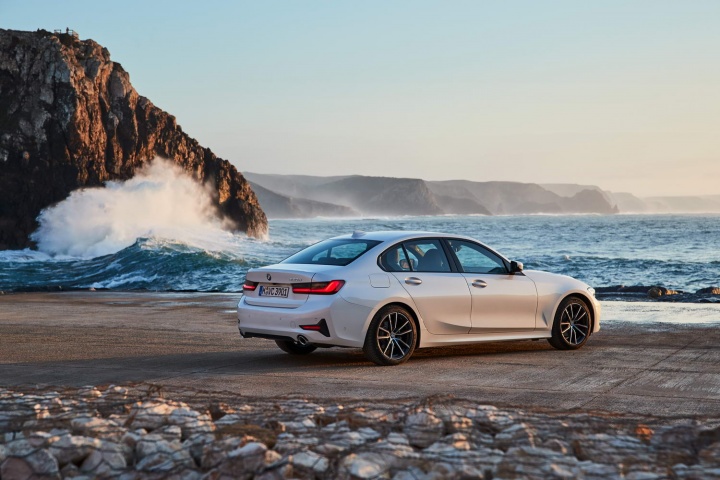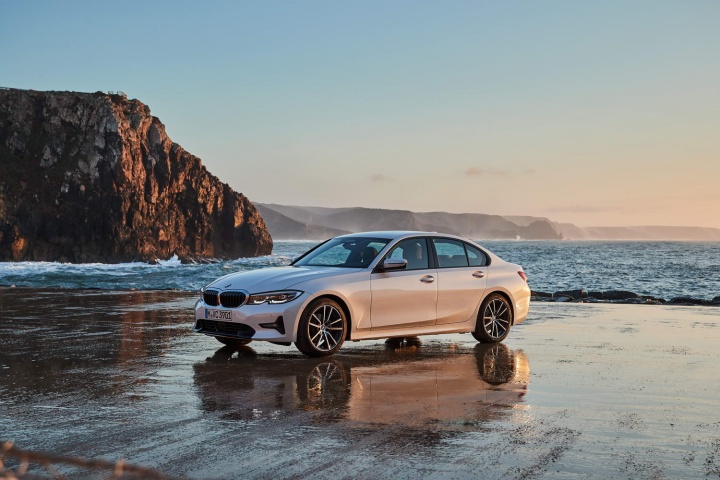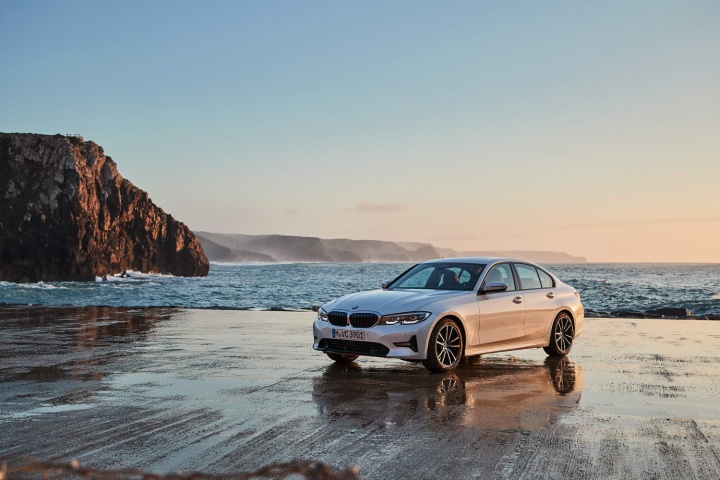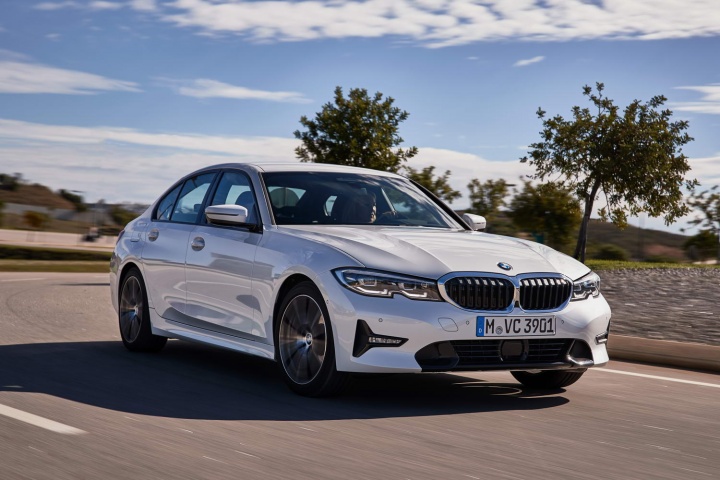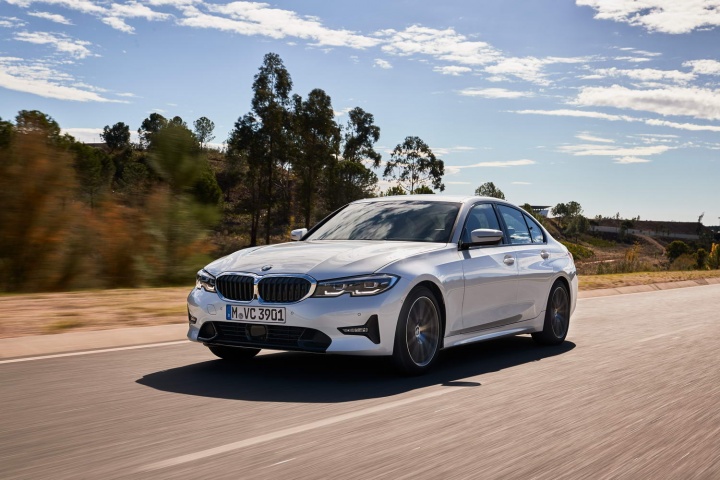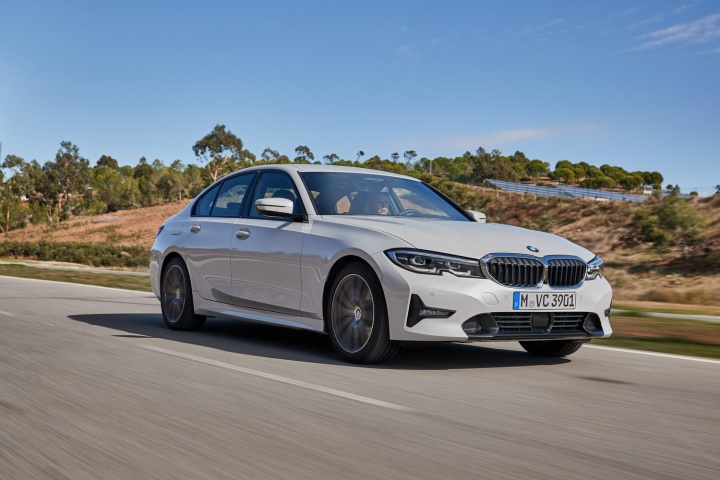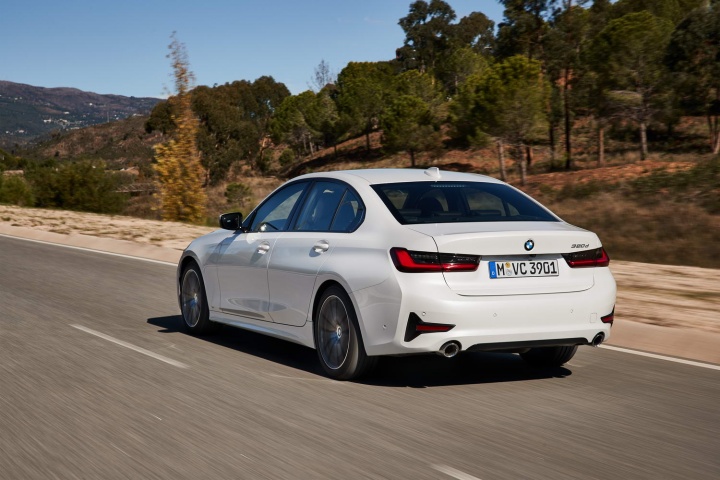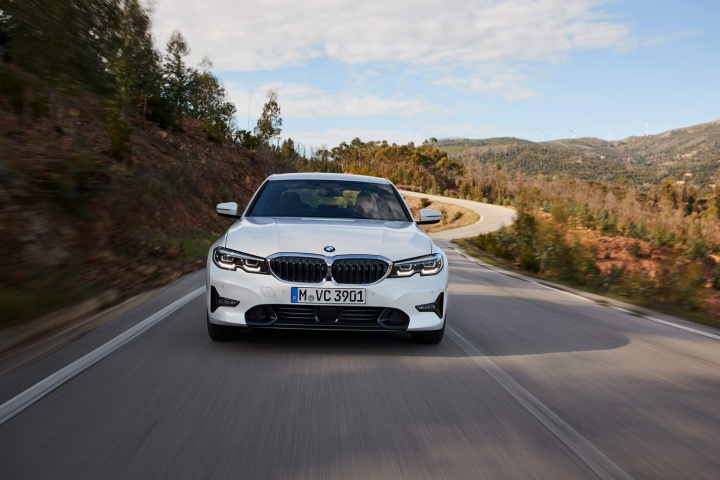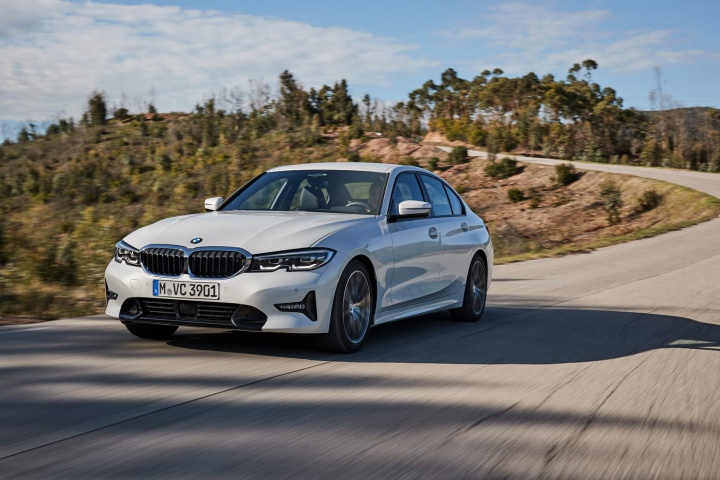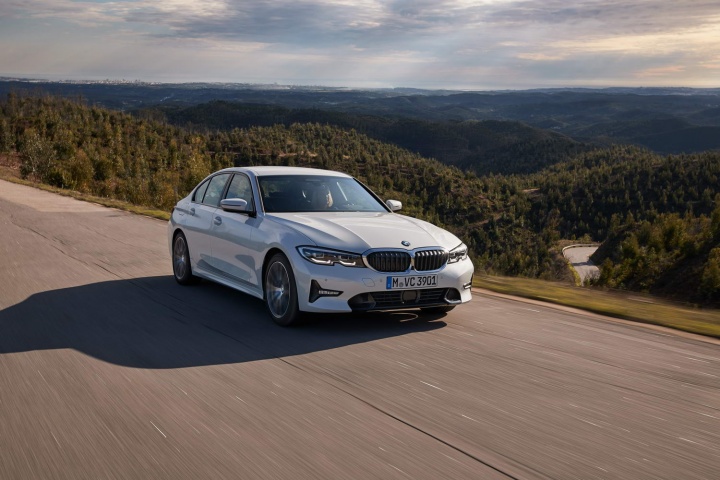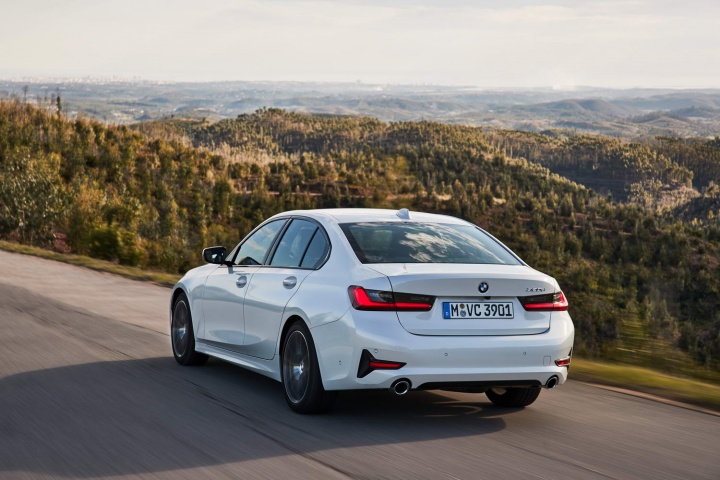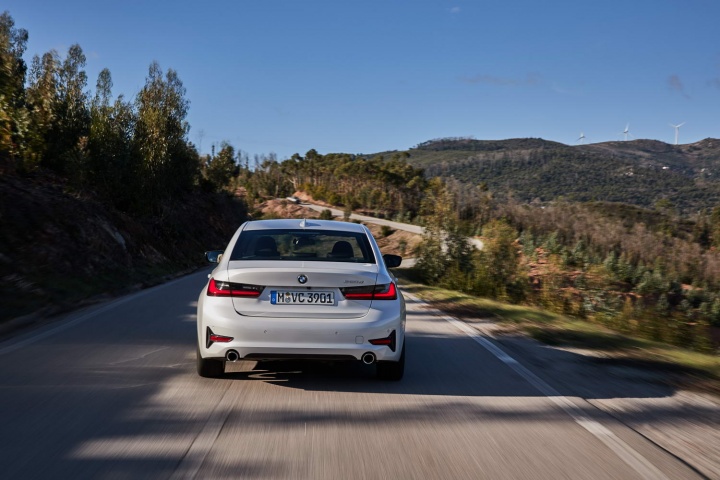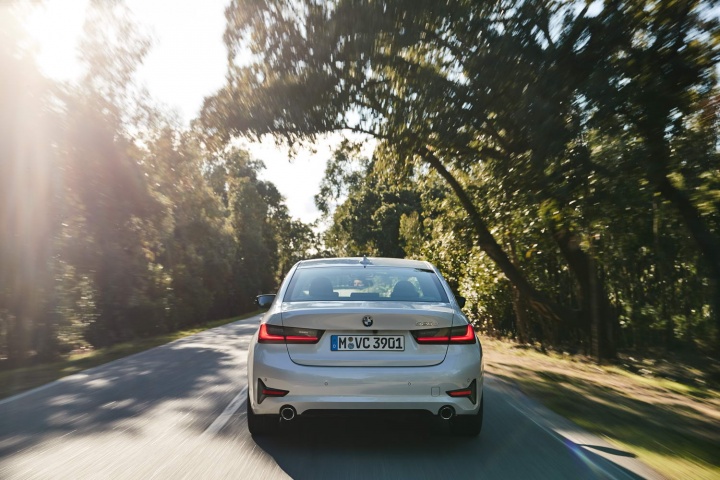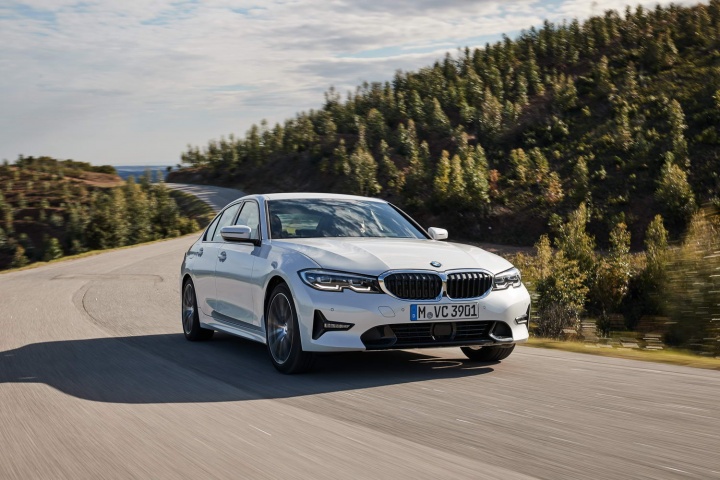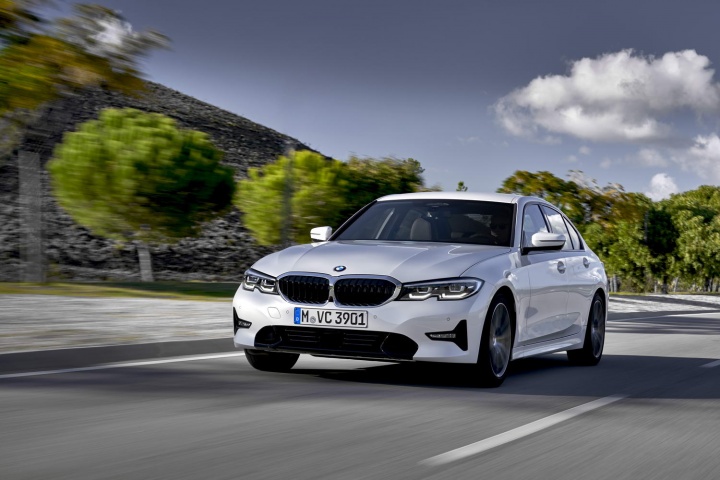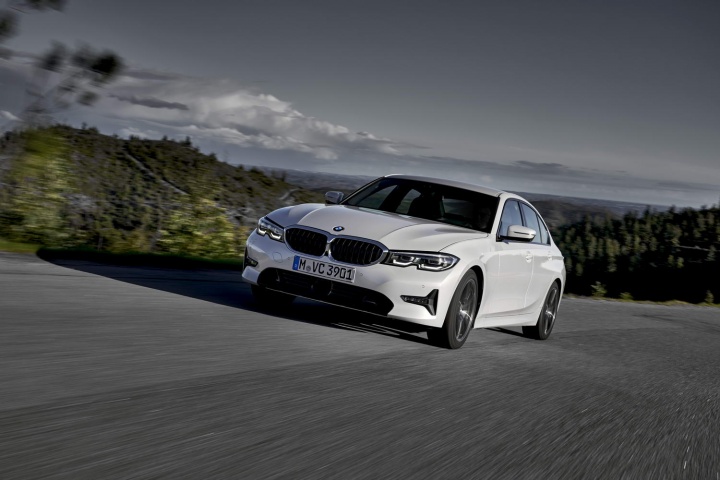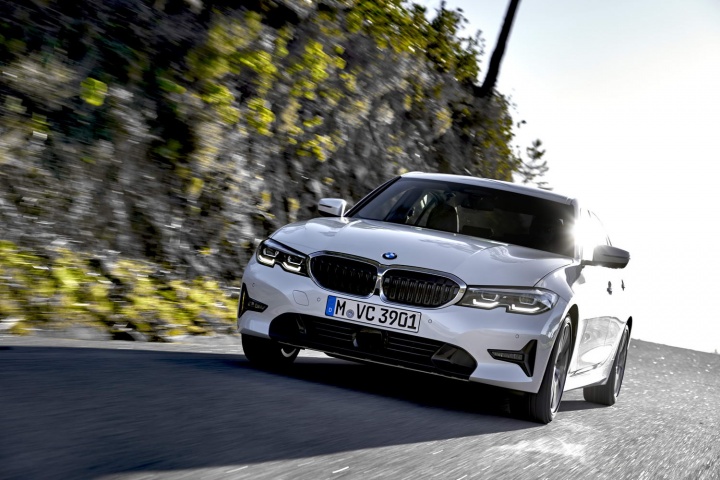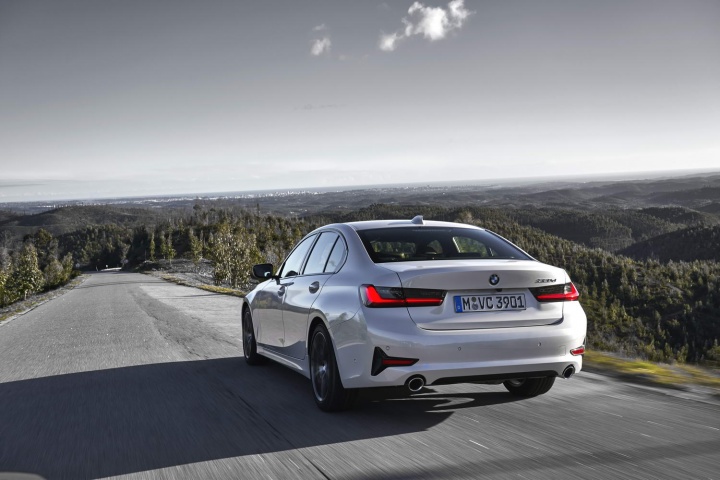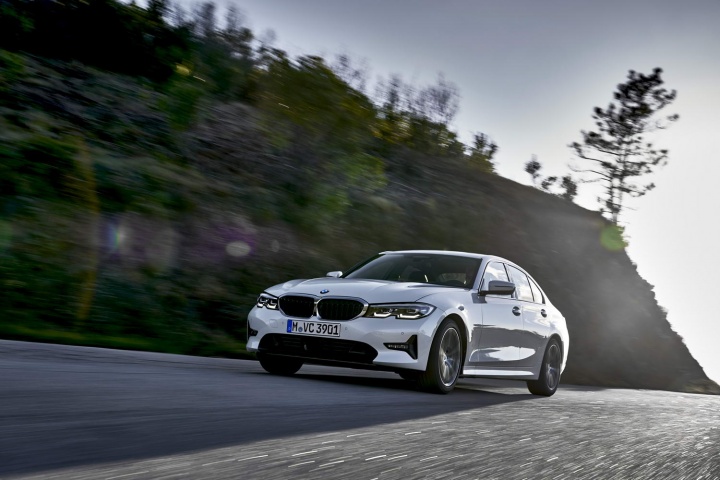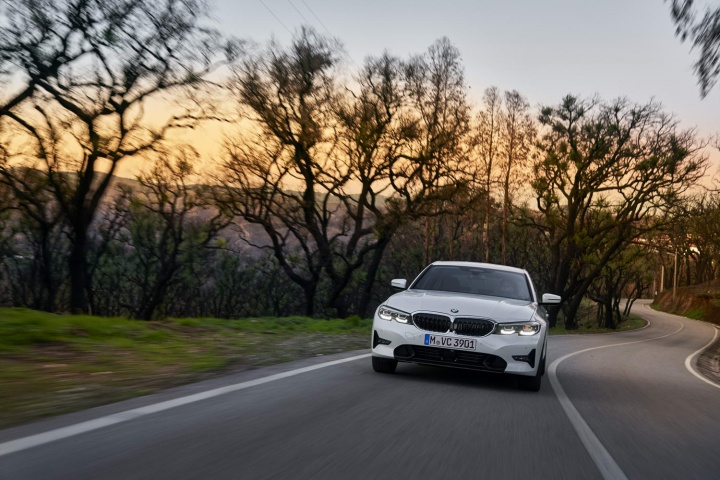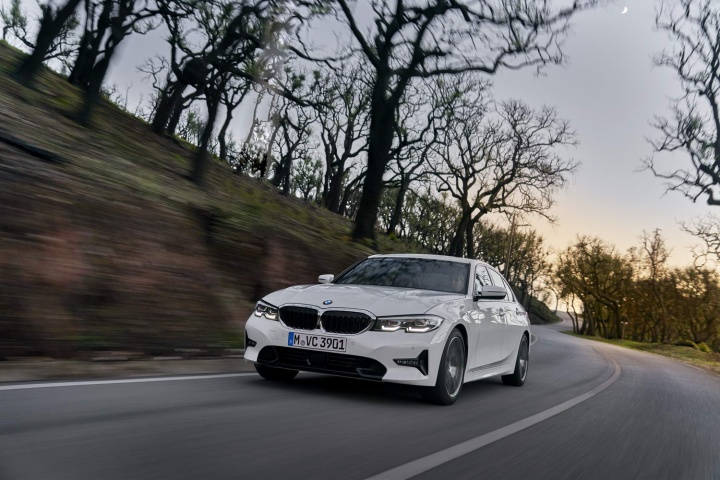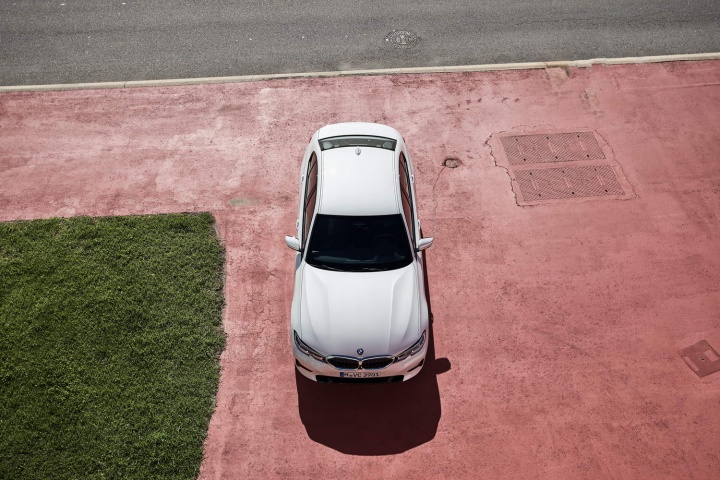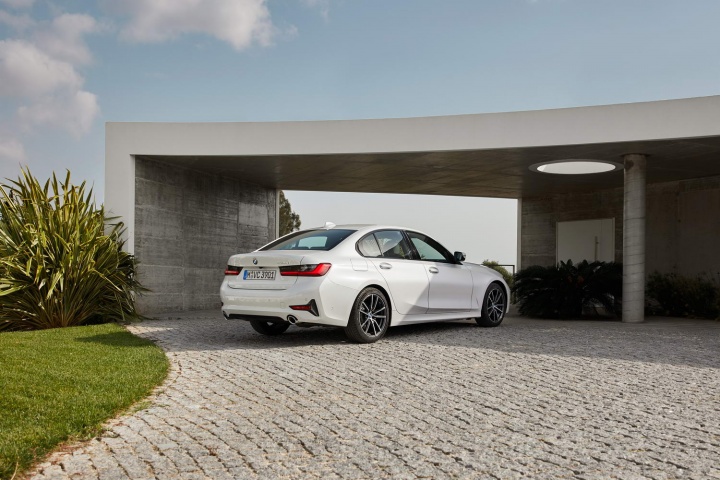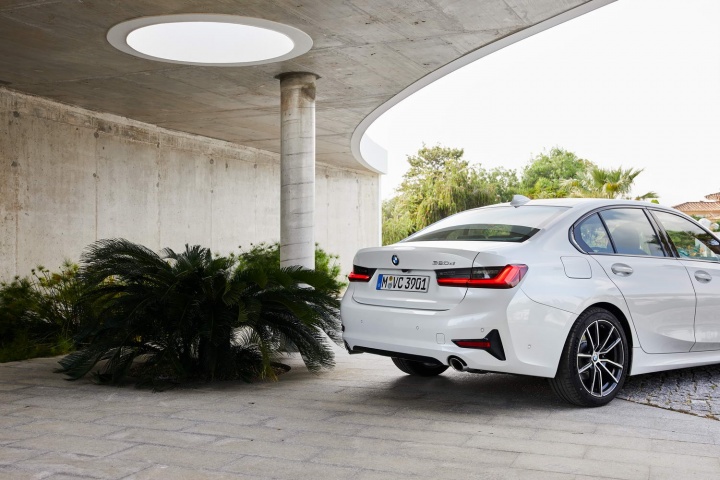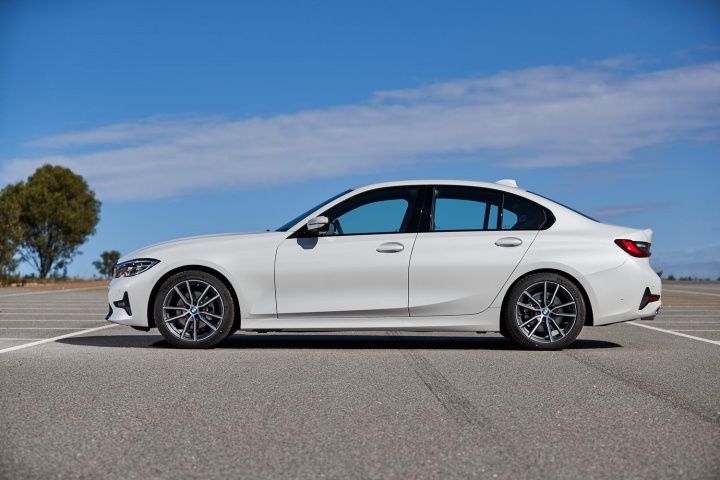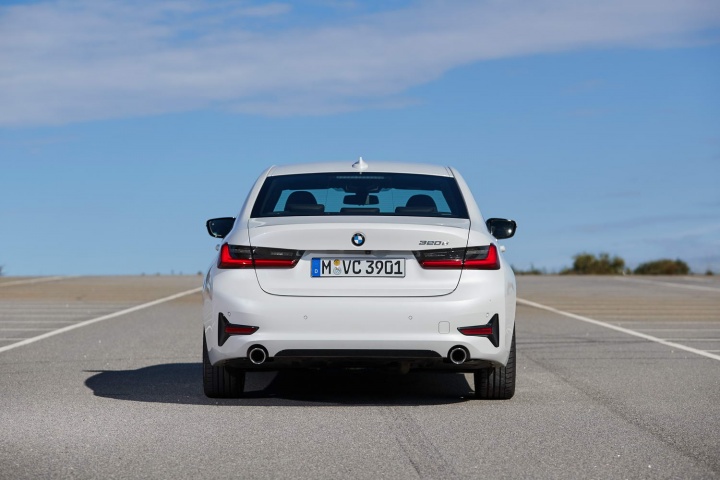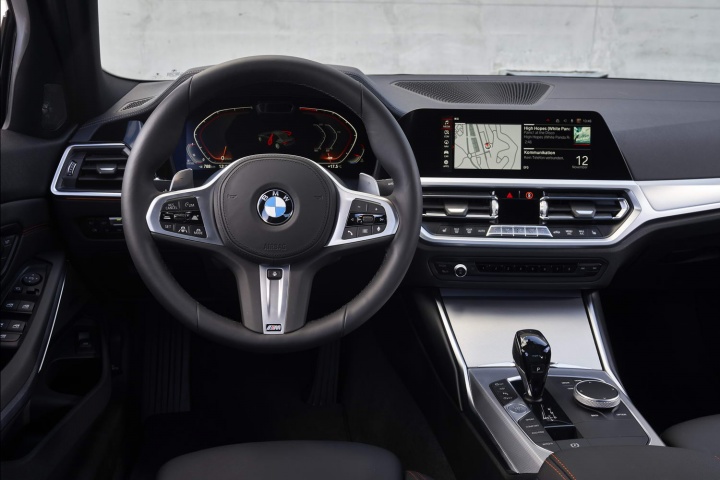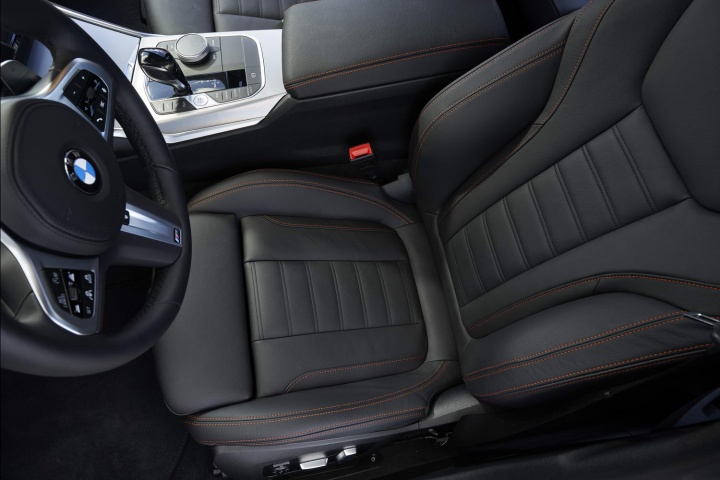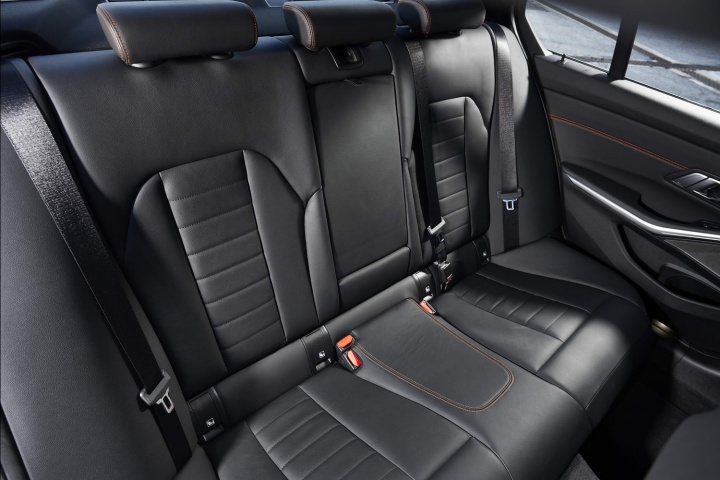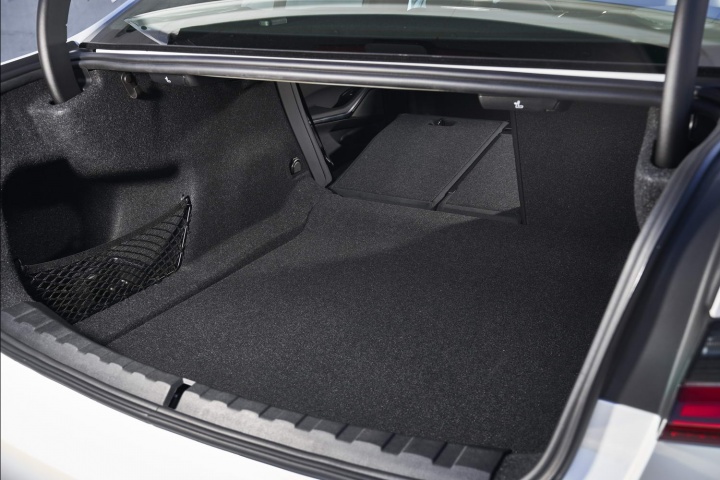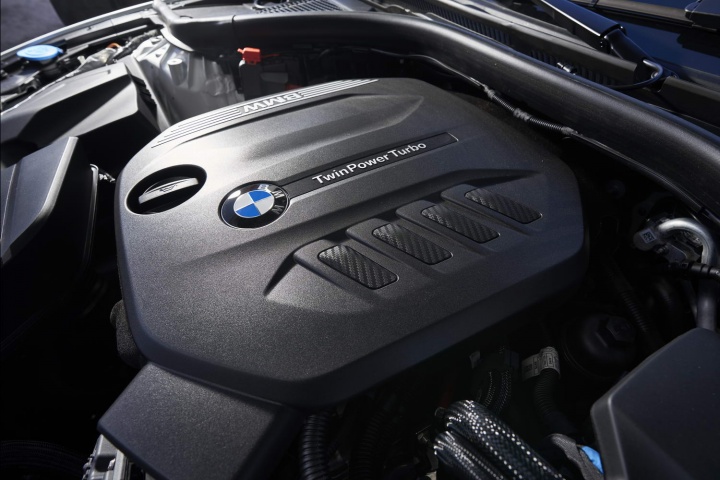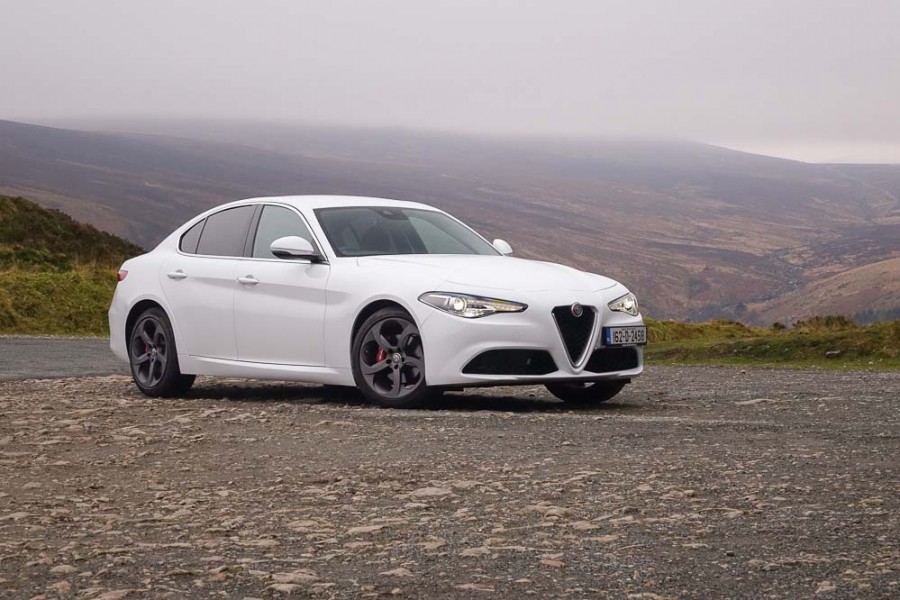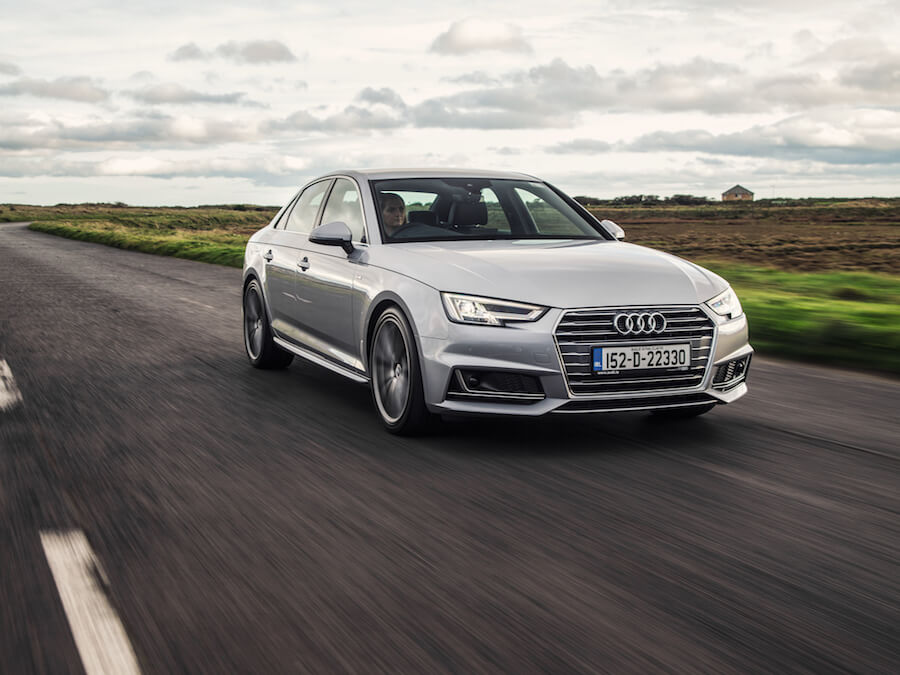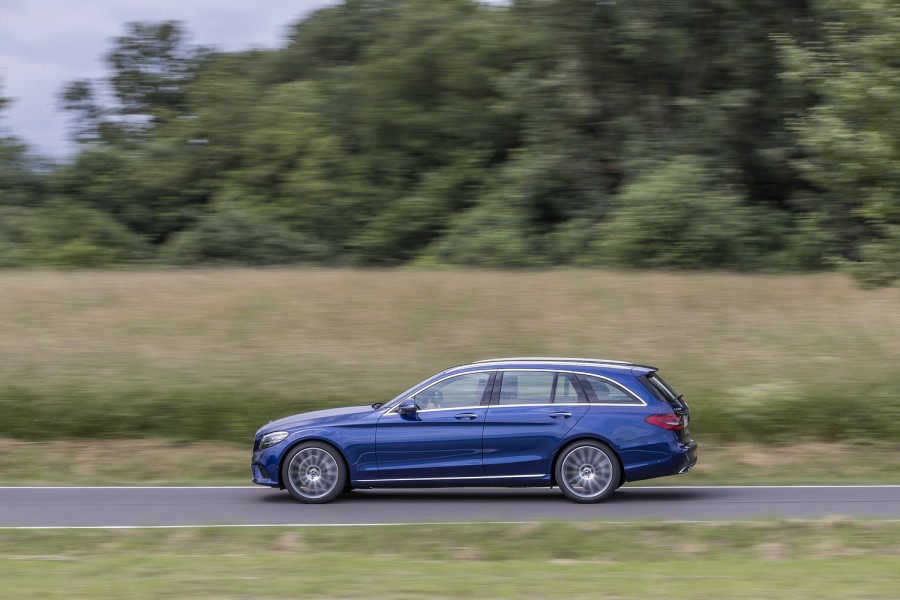The arrival of a new generation of BMW 3 Series is of interest to car enthusiast and regular motorist alike. Can the German company really enhance the sports saloon's driving dynamics (as it has openly stated it wants to) while improving everything else that's important to most car buyers, namely refinement, fuel economy and, well, technology? Our first drive in the 320d certainly suggests as much.
In the metal
There has been plenty of talk on social media about the looks of the new BMW 3 Series, and most of that chatter has focused on the rear of the car, likening it (and the 'character' line through the bottom of the doors) to that of the Lexus IS. In the metal, it looks quite different, especially when the sculpted rear lights are illuminated. They're made up of bright LEDs and complement the two exhaust outlets (standard across the 3 Series range) to give the rear of the car a sporty look. We're not entirely convinced by the T-shaped inserts in the rear bumper, a detail that's echoed in the front bumper, but perhaps they won't be so obvious when the car is in a dark colour.
The front of the 3 Series looks like a gentle evolution of the previous car, taking elements of the current 5 Series, though with sharper headlights that take on a very technical appearance. They butt up against the new one-piece radiator grille, which leaves you in no doubt who made the car you're looking at.
In all that, it's easy to miss the complex curves that are sharply hewn into the bonnet. In profile, it's clear that it's a long bonnet and that the design of the 3 Series is distinctly 'cab-back' with what appears to be quite a short rear deck. What's not so clear from a glance is that the new model is some 76mm longer than its predecessor and 16mm wider. The wheelbase takes 41mm of that stretch, while the front and rear tracks have been widened by 43mm and 21mm respectively, adding to the stance, but also, as we'll come to, the road holding. On that subject, while the new car is one millimetre taller than before, the centre of gravity has been lowered by a significant 10mm - and the new car is up to 55kg lighter, too.
That wheelbase stretch has been used to increase rear passenger space, though it'll never worry the Skoda Superb in that regard. And there's still a large transmission tunnel limiting foot space for the middle rear passenger. To be fair, we could say the same about most of BMW's premium rivals. At least the rear seat back splits and folds to expand the boot, which holds an acceptable 480 litres.
But, presumably, the buyer of the 3 Series will be spending most of their time in one of the front two seats. And there, it's a winner. Like all of BMW's recently launched new-generation cars, the cabin of the 3 Series is of exceedingly high quality, yet the design is quite restrained. This is epitomised by the centre console with a new design of gear lever and surrounding buttons. It's all beautifully made, and the buttons are wonderfully damped. Our only minor gripe is that the buttons are all the same size and shape, so you must actually look at them to see what you're pressing. Perhaps with time that would change for an owner.
There's buckets of storage space though, helped no end by BMW's compact new design of climate controls. Beneath them (and the seriously solid-feeling air vents) is loads of space for devices ahead of the gear lever and large cupholders. Behind that, and under the central armrest, is a very large and covered storage box. In comparison, the door pockets and glovebox are adequately proportioned, no more.
Anyway, you probably won't notice all that the first time you step into a well-specified version of the new 3 Series, as your attention will undoubtedly be drawn by the sharp new display screens. SE and Sport cars get an 8.8-inch touchscreen to access the latest iDrive infotainment system, but the M Sport version comes with Live Cockpit Professional, which ups that screen size to 10.25 inches and replaces the instruments with a 12.3-inch display that is partially configurable - as seen in the new X5, Z4 and 8 Series already. Shame it's not standard, but there you go. Even without it, the cabin of the 3 Series will impress with its quality. The seats are good and there's loads of adjustment of the driving position, too.
Driving it
A few things to make you aware of before you read too much into our driving impressions of the BMW 320d Sport. First up, the test car was fitted with the M Sport suspension package, which goes a lot further than just lowering the ride height and firming up the dampers; the geometry of the suspension and the rigidity of the car as a whole are also altered. Bundled with that is BMW's Variable Sport Steering, a variable ratio system that is more direct the more you turn the wheel, yet theoretically not over-sensitive when you're going straight. It also incorporates the variable electric power assistance of the standard 'Servotronic' power steering. We found it to be exceptionally responsive and free of friction, adding to the driving experience immensely. Bear in mind that the test car wore the excellent Michelin Pilot Sport 4 tyres, which are not a run-flat design.
To be honest, we were relieved to discover that the 320d was on M Sport suspension after a day at the wheel, as it's quite a firm set-up that won't be to all tastes. It's easy to imagine it feeling too uncomfortable on poorly surfaced Irish roads. Saying that, while the suspension on this test car was undoubtedly firm, it was also incredibly composed and controlled, never once having difficulty with keeping unwanted body movements in check, regardless of how extreme the undulations in the road. Some of that must be down to the use of clever new passive dampers that alter the damping force depending on vertical movement of the wheels.
We even got to drive it fast in damp conditions and it proved to be secure and stable, with no sign of any rear-drive nervousness that puts some buyers off this type of car. Unsurprisingly given the suspension and the new wide stance, the new 3 Series corners flat with little in the way of body lean and it carries a lot more speed through tight corners than most will ever require.
Indeed, on a seriously challenging mountain road, the chassis was so good that it made the 320d's engine feel a little flat. Until we glanced at the speedo and realised that it's just adept at hiding its speed... You see, despite the headline power and torque figures being unchanged from the previous 320d, the 2.0-litre four-cylinder engine has been considerably altered. It now has two turbochargers, for example, plus a new injection system, all in a bid to enhance cleanliness and efficiency. We can't tell you too much about that side of things (we averaged about 6.0 litres/100km until the roads turned interesting...), but there's no doubt that the engine is considerably quieter than before, certainly below 3,000rpm, where most of its work is already done. No doubt the acoustic windscreen (standard across the range) helps with some of that, but this is the quietest four-cylinder BMW diesel in a long time. We expect there's a lot more to come from it in terms of performance, too.
What you get for your money
Prices for the new BMW 3 Series start at €43,770 for the 318d SE, which, despite recent range-wide price reductions, represents an increase over the old car. Still, there's a lot of extra equipment as standard, so it's a fair move in our eyes - and the 3 Series is on a par with its main rivals in terms of outright price and strong resale values. The other trim levels are Sport and M Sport, representing price walks of €1,950 and €2,090 respectively.
For now, the diesel models are 318d or 320d, both available with manual or automatic gearboxes. The 320d can be had with xDrive four-wheel drive, too. The only petrol model we have pricing for is the 330i, offered in Sport and M Sport specifications, from €51,360, and always paired with an automatic transmission. The line-up will be expanded in 2019 by the addition of a 330e plug-in hybrid and the M340i xDrive, plus others such as the 320i.
Standard equipment includes LED lighting, three-zone climate control, 17-inch alloy wheels, parking sensors and a reversing camera, Park Assist, electric folding door mirrors, ambient lighting inside, the rather nifty 'light carpet' puddle light and an 8.8-inch touchscreen for the infotainment. The Sport model adds larger alloys, leather upholstery and heated seats (plus a few aesthetic changes), while the more sporty looking M Sport car also gains the digital dashboard mentioned above and a larger touchscreen in the middle.
Summary
So, has BMW done it? Is the brand-new 3 Series better than ever in seemingly all aspects, while simultaneously cementing its position as the go-to choice for those that really enjoy their driving? The answer is yes, but with the proviso that we're keen to try other specifications of the new model before declaring it the new class-leader. As ever, the 320d variant, in particular, does it all, mixing subtly punchy performance with great economy and refinement.

